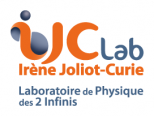To embody the scientific activities of the Health Group, three research teams constitute its base :
– The first is dedicated to radiotherapy and covers a wide range of fields from vectorized radiotherapy to external radiotherapy. One of the ambitions of this team is first of all to reinforce the control of the dose delivered to the tumor and organs at risk by proposing new instrumental and methodological approaches (development of nano or micro-sensors, ambulatory camera, …). The activity also extends upstream to the development of new radionuclides for internal radiotherapy in connection with the nuclear physics and radiochemistry activities of the laboratory and to the development of radiobiological methods dedicated to the analysis of the effects of radiation at the cellular and tissue levels. This axis is carried by the ‘Radiation et Vivant’ team (REV).
– The second is dedicated to imaging and includes the conception of optical and isotopic approaches for both clinical and preclinical applications. The main developments of the team concern more particularly the design of specific and innovative tools dedicated to the physiological and pathological characterization of brain tissue. These tools are aimed at cancerology (surgical assistance by endomicroscopy and clinical analysis of tumors) and neuroscience (telemetric implantable probes, behavioral neuroimaging). This axis is carried by the ‘Instrumentation Multimodale et Imagerie Tissulaire’ team (IMIT).
– The third is dedicated to the modeling of living organisms. The ambition is to model different aspects of gliomas (with and without treatments) in order to better understand and predict their evolution, to determine the links between the cellular scale (biology) and the tissue scale (medicine and imaging) and finally, to model cell migration in the context of invasive gliomas. The team relies on its know-how in clinical and biological data modeling, but also in statistical physics and image analysis. This axis is supported by the Modeling of the Living (MoV) team.
Finally, in order to extend the work of the cluster to biology, the teams rely on an Experimental Biology Facility with extensive expertise in cell and animal biology.






